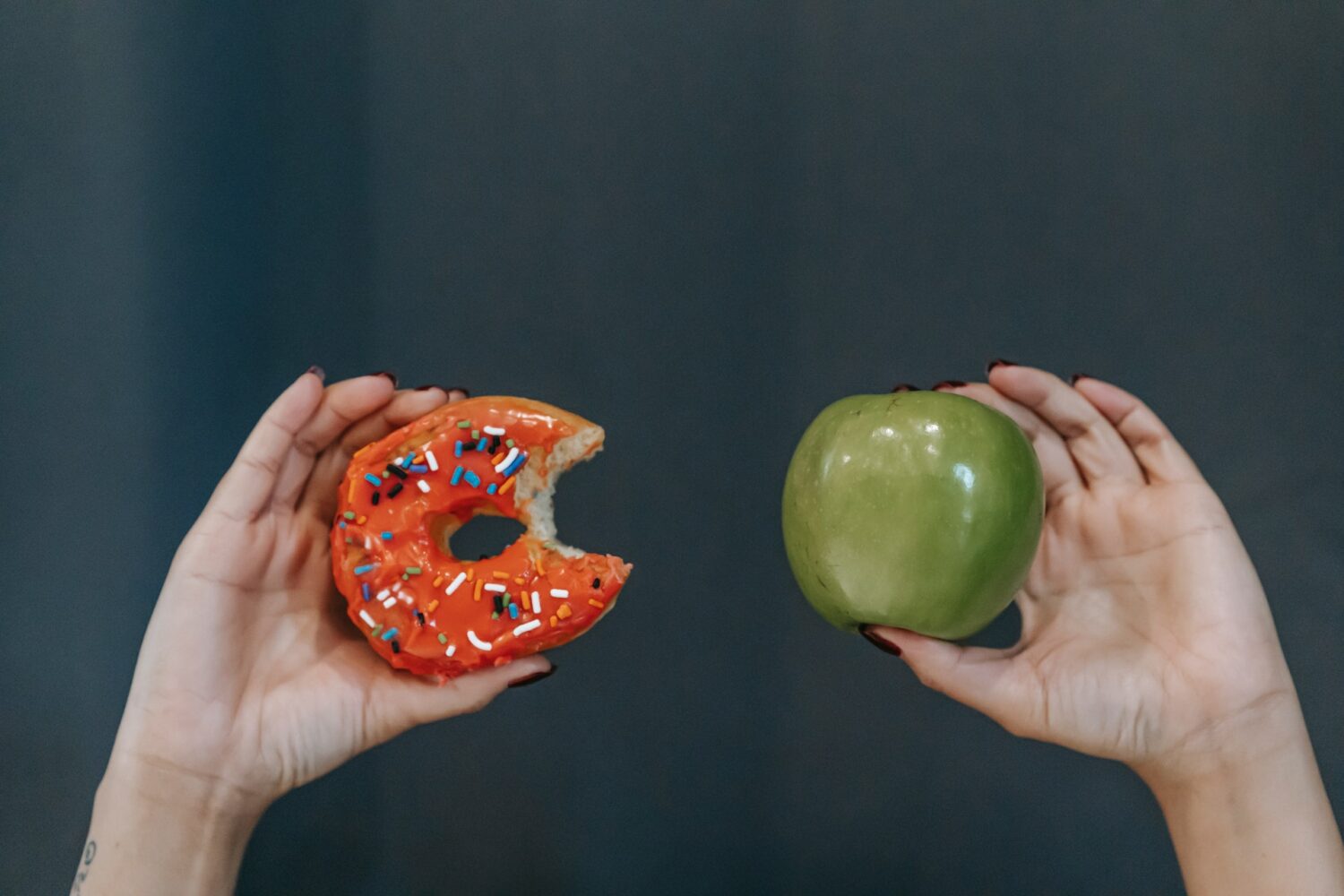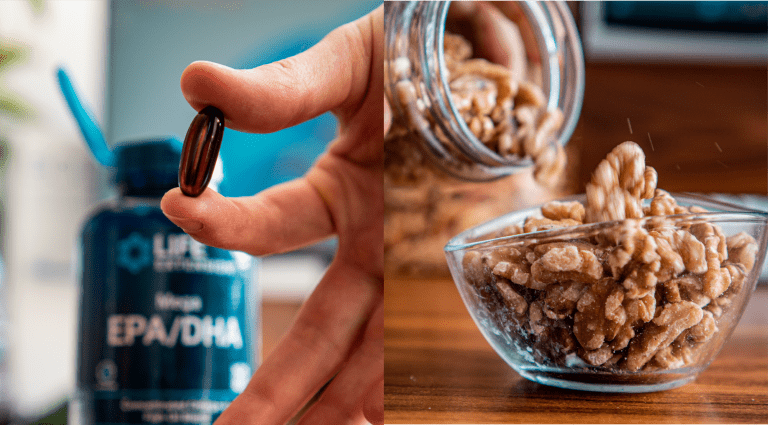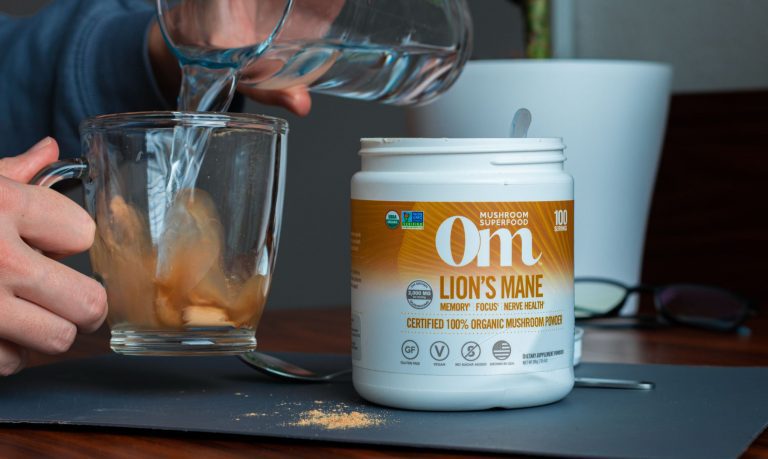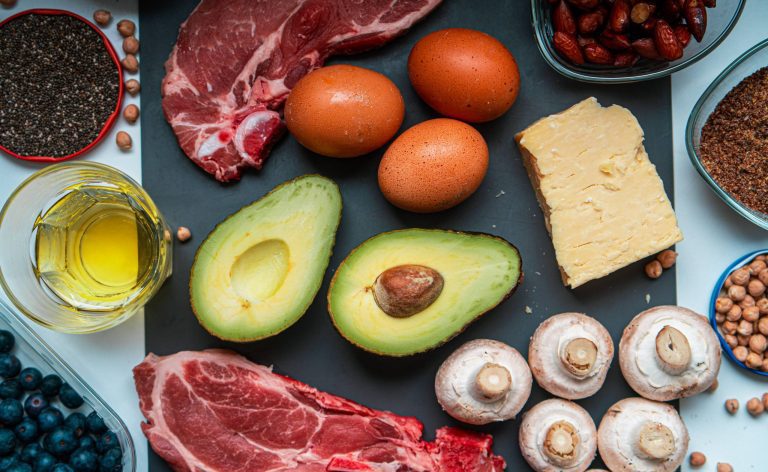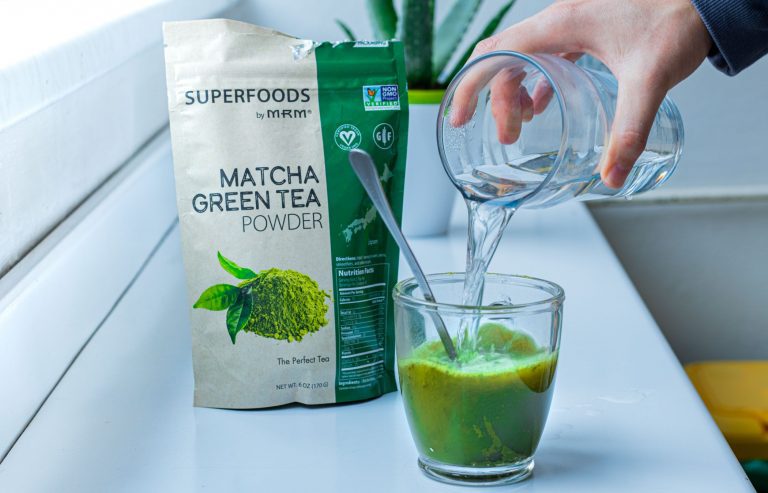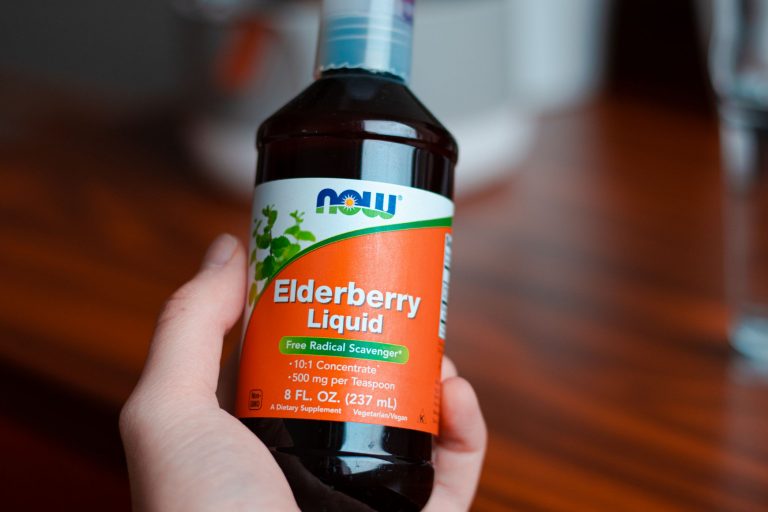Anti-Inflammatory vs Inflammatory Foods: 7 Foods to Eat and Avoid
Inflammation is a major driver of many modern-day health issues, like metabolic syndrome. It makes us slow, lethargic, low energy, sick, and weak. An anti-inflammatory diet incorporating foods rich in antioxidants is one of the best ways to fight inflammation. We’ll check out the top anti-inflammatory foods to eat and inflammatory foods to avoid.
Inflammation – Origin of diseases (Markers)
Inflammation is a natural regenerative process that occurs in the body as a result of metabolic and physiological adaptation. Whether it’s an attack of a pathogen/bacteria, tearing the muscle through exercise, or digesting food, oxidative stress and inflammation are normal processes. (1)
Once it becomes chronic, inflammation can assist (accelerate) the development of many diseases like cardiovascular, autoimmune, cancerous, diabetic, and neurodegenerative diseases. (2)
Chronic inflammation is linked to metabolic syndrome, and cardiovascular diseases and can increase the risk of insulin resistance and progression of type 2 diabetes. Some factors like sleep, stress, diet (excess sugar & calories), and lipid profile heavily impact inflammation markers like CRP, IL-6, and cytokines. (3) (4) (5)
Low-grade systemic inflammation can affect other organs in the body. It creates a sub-optimal environment for bodily functions. Neural inflammation is known as a common factor in neurodegenerative diseases, that can damage brain signaling, and activate NF-kβ. and increase pro-inflammatory cytokines. (6)
Benefits of Reducing Inflammation
Reducing inflammation in the body can be one of the first goals on our journey to healthier bodies. Creating a more alkaline and less acidic environment can support many physiological processes and cut the risk for many health issues.
By reducing inflammation, we can speed up fat loss, improve sleep, accelerate regeneration, improve body composition, protect our brain, support cognition, balance hormones, etc. It goes the other way around too, by losing weight we dump inflammation.
Medicine vs. Natural AI Foods
Although some drugs act anti-inflammatory, that’s the case on its own. Today we’ll focus on highlighting the importance of two things:
- increasing intake of anti-inflammatory, antioxidant-loaded foods
- excluding inflammatory foods, that increase oxidative stress
We believe through a healthy diet, we can optimize the environment in which our body lives and adapts. Chronic inflammation causes a cascade of actions detrimental to our hormonal health, so eating clean can be a potential preventative strategy.
An anti-inflammatory diet is a diet rich in vegetables, probiotic-rich foods, and fiber which can play a role as they affect gut health and permeability. EPA and DHA (omega 3’s) can also exert anti-inflammatory effects. Too much alcohol, high (GI) sugar foods, refined grains, and processed oil can all drive inflammatory gene activation. (7)
Anti-inflammatory vs Inflammatory foods everyone, let’s go.
Anti-Inflammatory Foods to Eat
The most potent combo for an antioxidant-rich diet is seafood, veggies, avocado, and herbs. Also, another great idea for a dessert is to incorporate nuts, dark chocolate, cocoa, berries, coffee, and cinnamon. Just throwing ideas around, catch yours.
1. Fatty Fish and Seafood
When it comes to seafood, you have a whole world of omega-3-loaded foods to play around. Include foods like salmon, mackerel, tuna, sardines, oysters, shrimp, and herring. One thing to stay away from is big fish, to avoid potential metal toxicity.
Fatty fish can protect against oxidative stress through various enzymatic antioxidant systems. Antioxidants work to fight against prooxidants and deactivate ROS or reactive oxygen species that drive OS up. The antioxidants-power of fish lies in its tocopherols and carotenoid content. (8)
The protein derived from shellfish has compounds known as bioactive peptides that can exert anti-inflammatory effects. Fish also contains polyphenols and omega 3, the latter of which has been shown effective for reducing inflammation. (9) (10)

2. Beans and Legumes
Fiber plays a massive role in gut health. Some of the richest fiber sources are greens, leafy vegetables, roots, beans, legumes, nuts, and seeds. How many times have you heard you should eat your low GI complex carbs? Part of that is due to fiber. Quinoa, red kidney beans, lentils, Navy beans, chickpeas, lima beans, green peas, pick yours.
High fiber intake is associated with lower digestive inflammation and heart issues. Fiber intake can support gut health, improve the microbiome and help keep CRP lower. (11)
Another cohort study with 4125 patients showed that higher cereal and total fiber intake were linked to lower inflammation and cardiovascular risks. (12)
3. Healthy Fats (omega 3)
While there’s a debate going on saturated fat, omega 3’s are for sure the polyunsaturated fat that’s praised on every blog. I am a big fan of grass-fed butter and beef too. For omega 3 FA’s, you’d want to up your intake of olive oil, avocados, walnuts (oil), and/or flaxseed oil.
Omega 3 play important role in mediating inflammation. They were shown to aid in the production of certain resolvins (D and E) maresins and protectins which are potent anti-inflammatory agents. (13)
The most beneficial and powerful omega 3’s are EPA and DHA. Having higher levels of these two, and lower arachidonic acid can mediate inflammation by changing the fatty acid composition in cells and the production of certain agents. (14)

4. Green Leafy Vegetables
Eat your greens. We all remember that from our childhood. But why? One factor is fiber. By improving gut permeability and maintaining a healthy gut microbiome, our brain is happier and our hormones are balanced. Inflammation is kept at bay.
But what about all these nutrients? Green leafy vegetables like kale, spinach, collard greens, microgreens, and Romaine lettuce are all rich in fiber and many vitamins and minerals. Also, per high volume, they’re very low calorie, which can assist in satiety and weight management.
Plants are also known to reduce inflammation due to the high content of phytochemicals, also called phytonutrients which are strong anti-inflammatories. Some of these compounds like triterpenoids and phenolics are more powerful than others. (15)
5. Berries
Not a big fan of fruit, but berries are my cup of tea. Berries are an extremely nutrient-loaded, antioxidant-rich, low-calorie option. They can support healthy function and keep inflammation and oxidative stress at bay.
The rich dark purplish color in berries comes from anthocyanin content. Berries like blackcurrant and blueberries have high antioxidant capacity. Yellow raspberries and buckthorn are high in flavonoids. Point is, these flavonoids and anthocyanins are potent antioxidants that have various health benefits. They can assist in protecting brain & heart health, and are a way better alternative to sweets for weight management. (16) (17)
A great way to increase antioxidant intake is to have a habitual berry-yogurt-flaxseeds protein shake. My favorite meal is mixing protein, greek yogurt, berries, and granola in a bowl, and serving it with black, mushroom-powered coffee.
6. Nuts
Nuts are a fiber-rich, fat-loaded, nutrient powerhouse. While overdoing it may spike up your calories, it’s a nice snack to have here and there. Get yourself some cashews, almonds, walnuts, pistachios, brazil nuts, or hazelnuts. Also, think of all the nutty recipes that go great with dark chocolate, coffee, cocoa, and berries. All are high in antioxidants!
Examining the polyphenolic content in 9 raw and roasted nuts, guess who the winner is? Walnuts, yap, the highest omega 3-rich nut. In general, nuts have high polyphenol content that’s responsible for their antioxidant properties. Eating nuts may reduce inflammation, drive HDL up and improve lipid profile. (18) (19)
7. Herbs and Spices
One of the highest antioxidant concentrations in foods comes in herbs and spices, which conveniently enough can pack a lot of flavors. When cooking, use natural herbs and spices like oregano, basil, thyme, Curcuma, cloves, garlic, rosemary, chili pepper, or saffron. Add some vanilla bean, cinnamon, or cacao to your dessert too.
Herbs and spices contain strong phytochemicals which have potent anti-inflammatory properties, fighting oxidative stress and inflammation. They also have high antioxidant activity, are natural, and can control food oxidation in foods (that you eat). Seems like a win-win situation to me! (20) (21) (22)
Fun Fact
An association between spice consumption and lower rates of cancer is found in epidemiological studies. The comparison between India (94) and America (318) per 100,000 people shows more than 3x lower cancer incidence. There’s no causal relationship to prove it, it’s just an observational study. However, it’s just another thing to look at, the potential use of spices for the reduction of oxidative stress. (23)
Inflammatory Foods to Avoid
By excluding inflammatory foods your body won’t have to use all its resources to fight oxidative stress all the time. It is as important, as increasing antioxidant-rich food intake. But the combination of both is the real deal. Dropping inflammatory foods, and increasing antioxidants may significantly reduce inflammation.

1. Refined Carbohydrates
Sugar vs. trans fats, who deserves the no.1 spot? While trans fats cause more damage as they structurally make up parts of your organs, sugar is the most widely consumed food element that disrupts our gut. By sugar, we mean refined carbohydrates, not all carbohydrates.
In terms of inflammation, eating a low-carb high-fat diet, assuming you fuel on healthy fats has been shown to drop inflammation. Getting energy from carbs can cause more oxidative stress or ROS molecules per each ATP produced than fats. However, carbs are the primary source of fuel, needed and essential.
Excluding Foods: We’re talking about excluding sugar or refined carbohydrates. These are your pizzas, doughnuts, white pasta, bagels, gorillas, candy, sweets, etc. I know it hurts.
Sugar on Mortality, Gut Health, Immunity
High intake of refined starch or sugar is associated with greater mortality risk, gut inflammation, insulin resistance, and obesity. Especially a combination of high GI foods, excessive caloric intake, magnesium deficiency, and inactivity. (24) (25)
Excessive sugar can also compromise gut permeability, activate the immune system, increase proinflammatory cytokines, lower HDL and increase the risk of chronic diseases. Compromising gut permeability can increase toxins flood which may contribute to obesity and NAFLD. (26) (27) (28)
All that information, combined with the fact that high dietary sugar intake or sugary beverages are associated with chronic inflammation, high CRP (29), and drive an obesity epidemic, seems like a good reason to limit or cut processed sugars. (30)
2. Deep-Fried Foods
Deep-fried foods, especially when eating outside are cooked in heavily oxidized and thermally processed (overheated) oil. This oil has a different chemical structure, and is more oxidized, which means it’ll drive oxidative stress (produce more ROS) and inflammation up. (31) That’s bad news for health & longevity, that’s direct aging of food.
While you may burn the sugar, trans fat will stay structurally part of your organs (brain) for longer. This can drive systemic inflammation and weaken your performance.
Deep-fried foods to exclude are French fries, fish fingers, onion rings, chicken wings (ouch), pies, doughnuts, and any other deep-fried food. Oh yeah, even that broccoli and zucchini if deep-fried.
Consuming repeatedly heated oils lead to the elevation of glucose, creatinine, and cholesterol. Also, such oil heating generates more free radicals (ROS) which have detrimental health effects. This lipid peroxidation increases inflammation due to the many pro-inflammatory, toxic compounds it contains. (32) (33)
3. Sugar-Loaded Beverages
It’s the same problem as with sugar, but this is a specific food group. Many active people feel that energy drinks, vitamin sodas, or sports drinks are great. Although some contain electrolytes and vitamins, many of these are sugar-loaded bombs. Students thrive on sodas and colas.
Adherence to sweet and creamy coffee is high, we feel flavored water is water and artificial fruit juices are good because it’s fruit. But check the amount of sugar next time. Also, zero-sugar cola is the “healthier version” anyone?
Sugary beverages can accelerate weight gain, as they’re the primary source of added sugar. There’s a relationship between sugary beverage consumption and diabetes (insulin resistance), cardiovascular risk, inflammation, and weight gain. (34)
4. Red Processed Meat
Red meat like beef, lamb, and pork can provide a ton of good nutrients like creatine, zinc, iron, vitamin D, and B vitamins. The debate on red meat and detrimental health effects due to saturated fats isn’t so strong yet. A big fan of red meat speaking here.
However, there’s a massive difference between grass-fed beef cooked lightly in extra virgin olive oil, and deep-fried processed bacon (grain-fed). The highest risk for cancer, heart, and gut issues is linked to not red, but red processed meat.
The extra serving of red meat which the increased mortality factor by 20%, was an extra serving of bacon, hot dogs, sausage, and salami. (35) Aside from these 4 – excluding any salted, smoked, or cured meat like ham, pepperoni, and beef jerky makes the list.
- Research shows that red processed meat is associated with higher C-reactive protein, an inflammation marker, and lower adiponectin levels, a marker related to T2 diabetes and obesity. (36)

5. Unhealthy Oils
With unhealthy oils, we refer to trans fatty acids and processed vegetable oils that turn rancid fast. Eating these kinds of oils won’t do a favor to your brain, aging, or health. They increase oxidative stress and inflammation.
The main oil to stay away from is margarine. A great alternative could be grass-fed butter. On the flip side, processing vegetable oils like canola oil (used frequently), corn, sunflower or safflower oil turns them rancid, which is bad.
Such shortened, processed oils can increase omega-6 levels, which are already too high in the diet. This increases obesity and neurodegeneration risk, is detrimental to cardiovascular health, and lipid profile, and increases blood pressure. (37) (38)
Consumption of excessive omega-6 oils increases inflammation due to the higher levels of its eicosanoids which act pro-inflammatory. High omega 6 to omega 3 ratio can increase the risk of rheumatoid arthritis, Alzheimer’s disease, inflammatory bowel disease, etc. (39) Most of these have autoimmunity and inflammation in common.
6. Alcohol
Alcohol doesn’t just disrupt your sleep – it’s also empty calories. It makes us slow, lethargic, and tired the next day. It increases toxic substances in the body, causes liver and kidney damage, headaches, and disrupts hormones. Is it worth it?
Excluding alcohol: Excluding alcohol like cognac, beer, rum, whiskey, vodka, liquor, gin, and tequila is getting one step closer to keeping inflammation low. Not a big fan of alcohol, but these drinks were all I could pull off.
Alcohol can increase the translocation of lipopolysaccharide in the gut, which functions to create a gut barrier. Once that’s compromised, gut permeability is increased and more alcohol toxins can flow into our blood. Alcohol doesn’t just increase inflammation but impairs our gut’s ability to mediate and fight it. (40)
Another study in which people living in Porto, Portugal were recruited (840 women, 490 men) showed an association between alcohol intake and CRP (inflammation marker) which was linear in mean and J-shaped in women. (41)
7. Artificial Sweeteners
Artificial sweeteners are everywhere. They are an alternative to sugar, which in excess can drive inflammation, and weight gain and have detrimental metabolic effects. But artificial sugar may not be the best option too, since some (not all) sweeteners can disrupt hormones.
Aspartame is one of the most widely used sweeteners, 200 times sweeter than sugar. Thing is, aspartame doesn’t cause the same predictable glucose spike, which makes it hard to balance glucose.
- Also, aspartame may lead to weight gain, increase cortisol and induce oxidative stress, which is detrimental and may lead to insulin resistance. (42)
- Another sweetener tested in animal models is monosodium glutamate. It was shown to damage intestinal gut flora in animal models only at higher levels, while low doses didn’t have such an effect. (43)
Nonetheless, the effect of AS will depend on the frequency of consumption, genetics, type, quantity, and other factors. Some sweeteners can increase pro-inflammatory substances and increase immune reactivity in the gut, increasing inflammation. (44)
Conclusion
- Diet is an important factor that affects inflammation in the body. The best strategy involves excluding inflammatory foods and increasing antioxidant-rich foods intake.
- Inflammatory foods like deep-fried foods, red processed meat, excess sugar, sweeteners, alcohol, and trans fats can increase gut inflammation, compromise permeability, accelerate aging, have detrimental metabolic effects, and increase oxidative stress.
- Incorporating anti-inflammatory foods like berries, cocoa, nuts, fish and seafood, avocados, green leafy vegetables, nuts, seeds, beans, and legumes can reduce inflammation and neutralize free radicals.
- Herbs and spices have the highest antioxidant capacity. Plants like (veggies, fruits) contain flavonoids and phytochemicals, Leafy vegetables, beans, and legumes are fiber-rich foods, while avocado, walnuts, and seafood have high amounts of omega-3 healthy fats.

